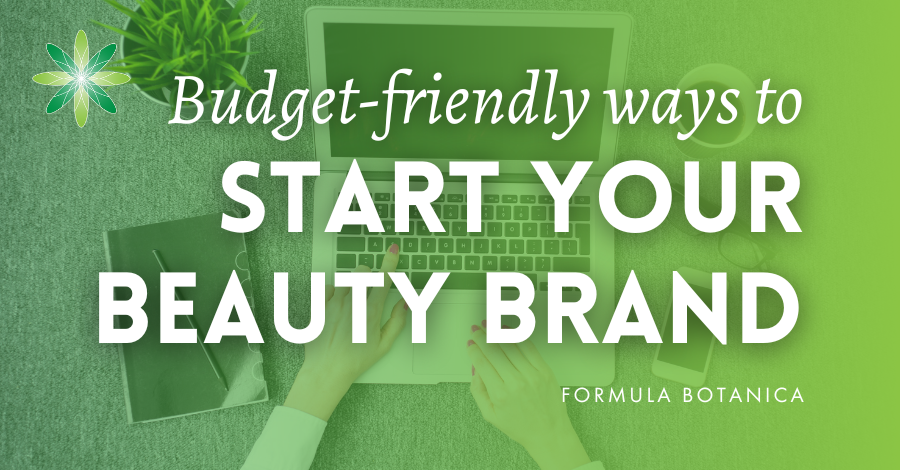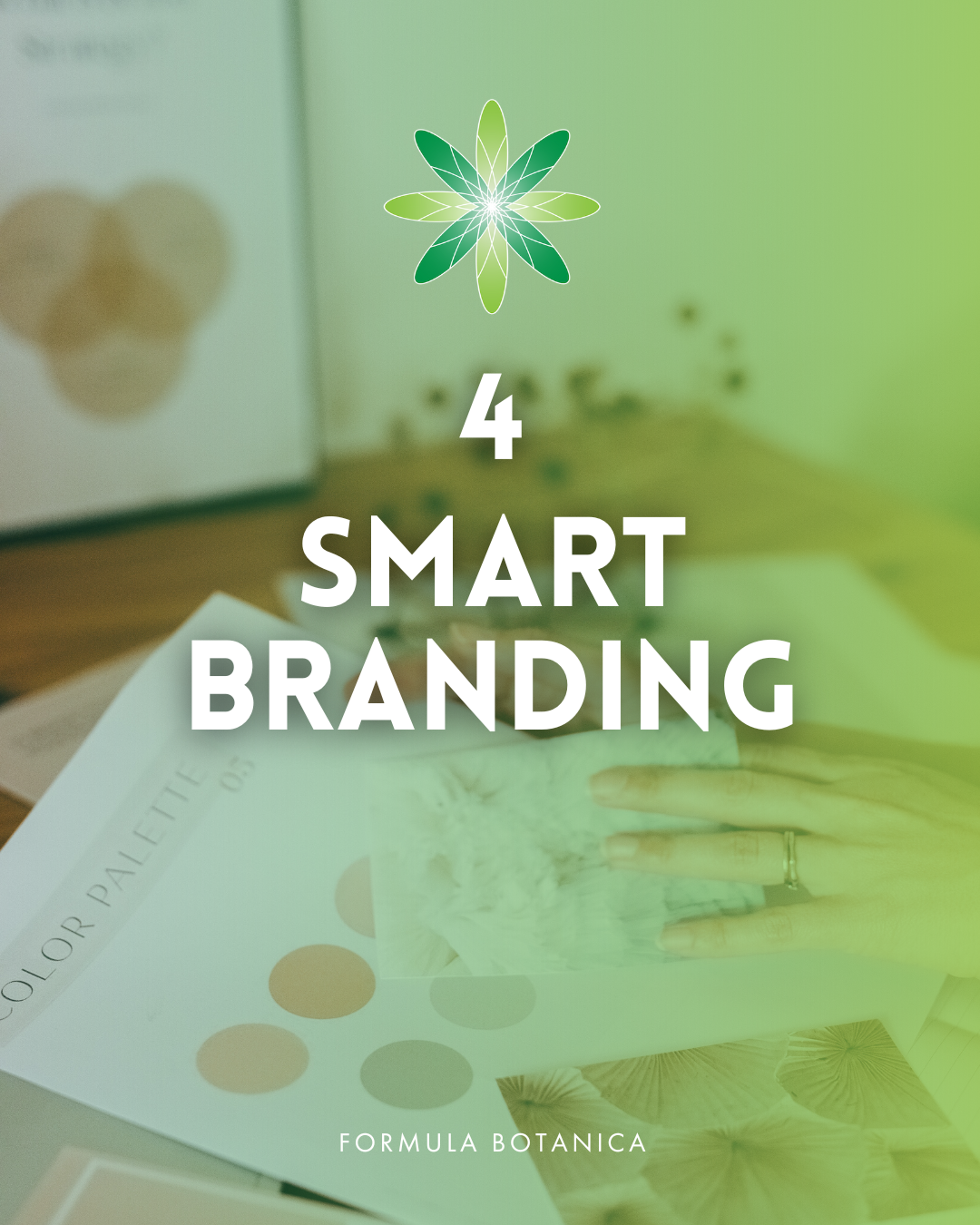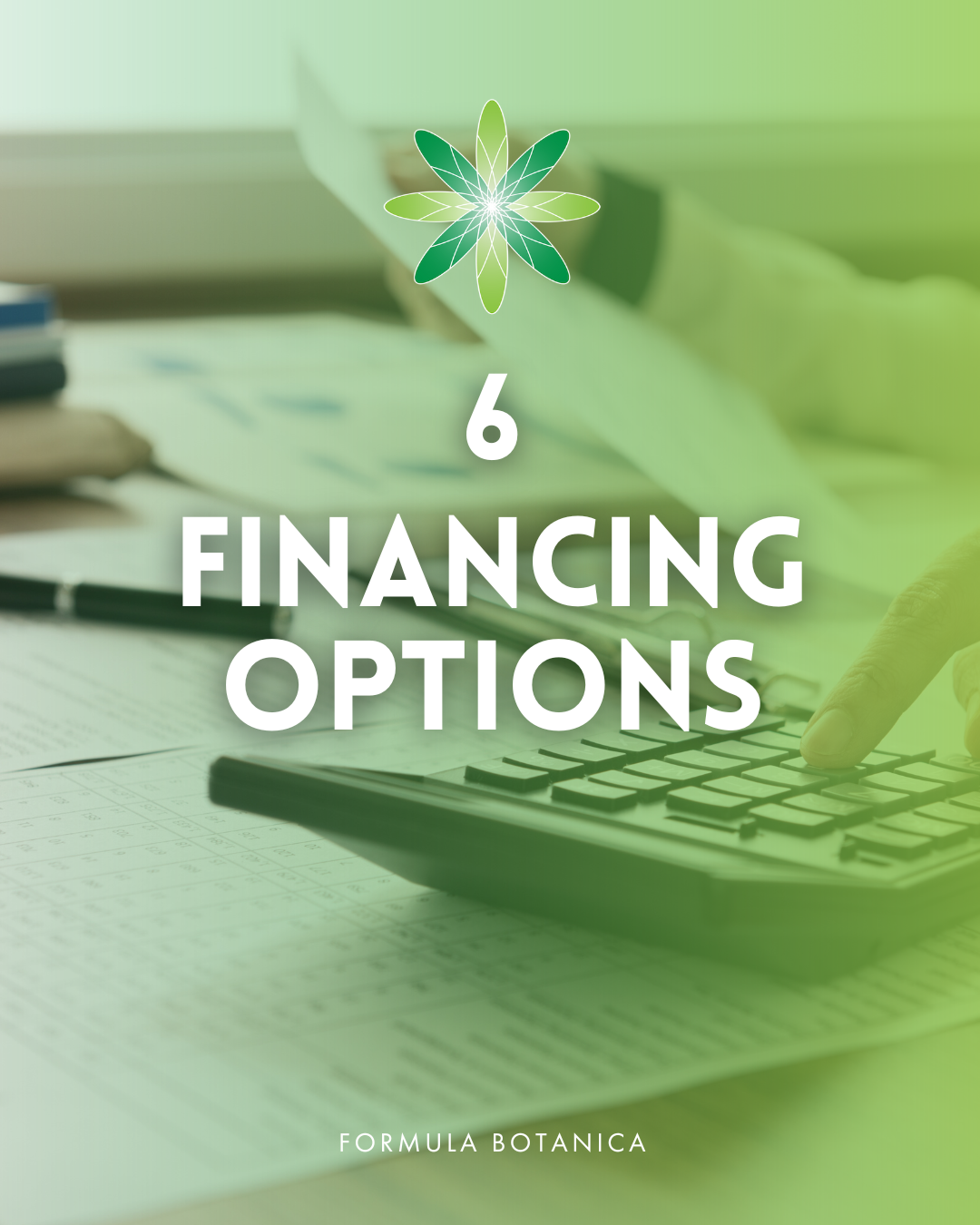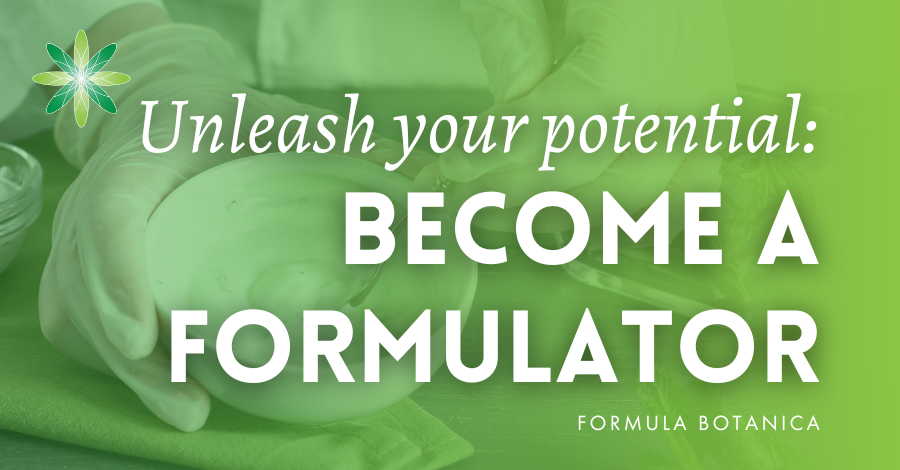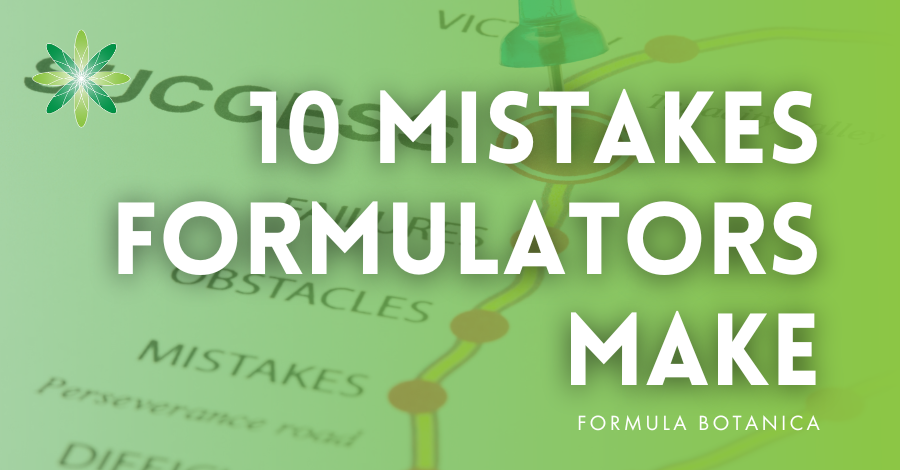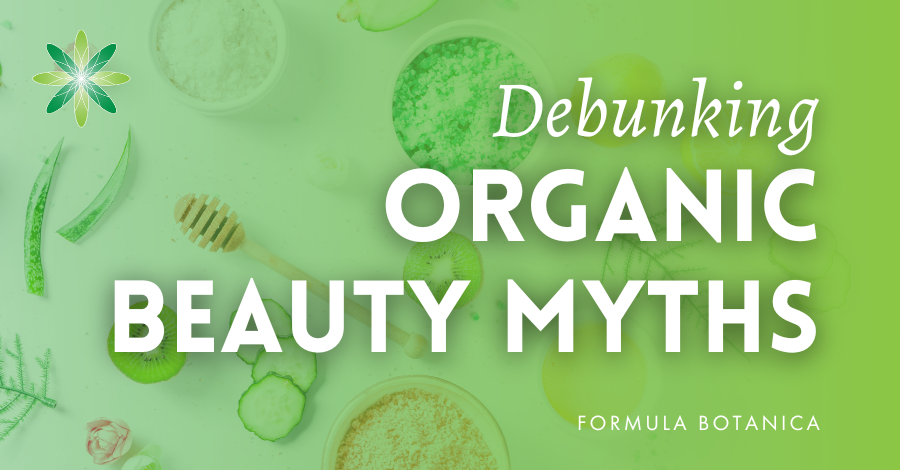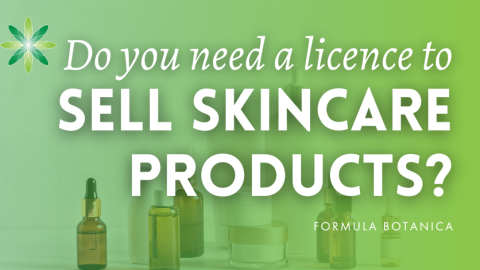Updated: 17.09.24
The indie beauty world is seriously buzzing right now. Every week, more and more creative entrepreneurs are starting their beauty business from home. Just take a look at our amazing graduates, who’ve gone from simple kitchen experiments to retail-ready products. And this could be you too.
If you’ve been dreaming of starting your own natural skincare or haircare business from home, you’re in the right place. There’s never been a better time to start your own beauty business, whether you’re looking for a full career shift or a side hustle. And the best part? You don’t need a big budget to start. In fact, most of our graduates started on a tight budget and went on to build successful, award-winning brands.
Ready to get started? Learn the 7 budget-friendly strategies to start a beauty business. First step: create a solid plan. Let’s turn your dream into reality!
Step 1: Research and plan your beauty business
The first step in building your beauty business is research and planning—and the best part? It doesn’t have to cost a thing!
Start by defining what you want to create and what you hope to achieve with your brand.
Think about your mission, vision, and, most importantly, your unique selling proposition (USP)—what makes your brand stand out? Here are some things to consider during your research and planning process:
The power of a founder-led brand
One of the greatest advantages of being an indie beauty entrepreneur is that your brand is deeply personal—it’s led by you. Your story, your vision, and your passion are what set your brand apart from the competition.
Whether it’s your formulation philosophy or the story behind why you started, your voice makes your brand stand out. Listen to some of our graduate stories, each of whom has unique niches and brings a fresh perspective to the industry:
Episode 91: The brand mission of indie founder Sandra Velasquez
Episode 157: From bootstrapping to award-winning beauty brand
Episode 107: Naughty Alchemist: graduate & indie brand story
Your niche is your strength
As you can see from the case studies above, your niche is your strength. It’s your selling point. While these graduates come from different countries and backgrounds, they all have one thing in common: brands that are distinct in their markets.
Nopalera is a Mexican-heritage brand loud and proud, elevating Latino products and entrepreneurs. The Glowcery is based on natural superfood ingredients and inspired by the fruit and vegetables in our groceries. Naughty Alchemist highlights the value of ingredient transparency as its founder formulates an “open-kitchen” style in view of her beauty salon customers.
Each has found a niche and infused it with their own personal passion. And they all started their beauty businesses at home.
Research your market
It may take some time to define your niche, mission, and formulation philosophy, but it’s important not to rush these foundational steps. For instance, Sandra of Nopalera spent over a year refining her brand and mission before launching her first products. Once your ideas are solidified, you’ll need to research the market to ensure there’s demand for your brand.
You don’t need to invest in costly market reports. Use free online tools, such as those we’ve highlighted in our top beauty business resources, and conduct informal research with potential users.
Naz Bashir, founder of Solo Skin London, discovered her product was retail-ready only when friends kept requesting her eye cream. Her journey from a side hustle to a thriving business is an inspiring read:
Episode 127: From indie beauty idea to selling 500 eye creams
Step 2: Set up a budget-friendly home lab
A common misconception that often holds people back from starting a home-based beauty business is the perceived cost of equipment. Many imagine the large-scale production lines of beauty conglomerates and think they need expensive, high-tech machinery capable of producing thousands of units.
In reality, while you may eventually need to move from your kitchen table, setting up an efficient home lab doesn’t have to break the bank.
How to set up a home lab
Many of our students have transformed spare bedrooms or garages into functional cosmetic labs. Check out these videos for a peek into their setups, along with expert advice from our tutors on what you need to get started:
Behind the scenes in our students’ labs
Beginner’s guide to setting up a home lab
Equipment
There is no need to invest in expensive equipment at first. Sandra, for instance, formulated just 100 units when she created her first batch for sale. Here’s how to set up your home lab:
When you start learning to formulate, all you need is a basic set of tools, which are cheap and easy to source. The next step is to invest in some more professional lab equipment, such as larger capacity digital scales and a blender. However, you can manage well with a stick blender with smaller batches and purchase that countertop homogeniser later on.
Good manufacturing practice (GMP)
Wherever you choose to set up your production space, it’s essential to follow Good Manufacturing Practice (GMP). These are straightforward guidelines designed to ensure safety, hygiene, and consistent procedures in cosmetic production.
Keep in mind that some countries don’t permit home-based cosmetics manufacturing for retail purposes. Make sure to research local regulations before committing to any expenses. For more information, refer to this helpful guide:
Step 3: Formulate budget-friendly products
As you move from formulating to manufacturing, you’ll need to purchase ingredients in larger quantities. Before moving forward with any formulation for your product line, it’s crucial to calculate the costs thoroughly and ensure you can afford the ingredients at the minimum order quantities (MOQs) required by your suppliers.
Calculate your COGS
Start by determining the thresholds for different batch sizes and working out your minimum viable production volume. While you may have been buying small, retail-sized quantities for your trial formulations, purchasing in bulk at wholesale prices can significantly lower your unit costs.
You’ll need to account for every element of your product, including the cost of ingredients, packaging, and labour—whether it’s your own time or someone you hire. Doing the math upfront is key to knowing if your product is financially viable.
Fortunately, there are online tools that can help small businesses calculate their cost of goods sold (COGS). Being meticulous with your costings is essential to ensuring profitability. Remember that COGS typically doesn’t include other vital expenses like marketing, promotions, or any support you may need to offer retailers if you wish to expand in the future.
Starting simple
Many of our graduates have launched their beauty brands with just a few products—or even a single “hero” product. Simple, anhydrous formulations like balms, salves, and face or body oils are a popular choice for beginners. These products are cost-effective to produce, require fewer ingredients, and can be made with basic equipment.
Packaging is easy to source in small quantities, and you can customise the labels to reflect your brand’s unique ethos. It’s wise to avoid committing to large runs of screen-printed packaging until you’ve tested your product on the market. For some ideas about starter formulations that won’t break the bank, see:
10 best beauty products to make at home
6 easy cosmetic formulations for beginners
How to make your own skincare products
The beauty of these formulations lies in their versatility—they fit seamlessly into most customers’ beauty routines and are ideal for selling at local events like farmers’ or artisan markets. Plus, they’re practical to ship and can be easily tailored with local or regional botanical oils, butters, and essential oils that align with your brand’s niche.
Step 4: Design a stand-out brand
When it comes to branding your beauty business, doing it yourself can be a great way to save money, especially in the early stages.
Many graduates, like Roshanne from The Glowcery, successfully designed their logos, colours, and packaging to get their brands off the ground without hiring expensive agencies.
But ask yourself—do you have the skills and time to learn design tools and create professional-looking branding?
Invest in branding
If there’s one area worth investing in, whether it’s your time or outsourcing to a professional, it’s your branding and packaging design.
A good designer won’t just make things look pretty—they’ll help you dig deeper into your brand mission, vision, and ethos, which is the foundation of everything.
We’ve all heard “Your brand is more than a logo,” and for beauty businesses, this couldn’t be more true. Your branding needs to work hard for you—it’s what will make your products stand out in a crowded market and reflect the heart of your beauty business.
We’ve got tons of resources to help you navigate this crucial step:
Episode 15: Top 10 tips on branding indie beauty businesses
Episode 16: Beginner’s guide to branding a beauty business
Episode 17: Working with a designer in branding your beauty business
Defining your brand idea
Take Sandra Velasquez, for example. She spent a year fine-tuning the brand identity for Nopalera before even starting on her formulations. That’s because branding isn’t just about looks—it’s about setting the tone and mission for your entire business.
Take your time with this process. Your first customers will give you feedback on how your brand resonates, and you’ll likely make adjustments along the way.
Avoid big upfront expenses until you’ve tested your concept in the market. You don’t need to splurge on a big agency—a skilled freelance designer can do the job just as well. Whatever path you choose, make sure you’ve carefully thought through your brand before investing in packaging.
Step 5: Choose cost-effective packaging
Over the past year, packaging costs have surged due to factors like rising fuel prices and depleted paper supplies. However, this doesn’t mean you can’t still be cost-effective with your packaging.
Formulate for your packaging options
To stay cost-effective, reduce your packaging needs, but remember that your formulation will dictate what’s required for safety, hygiene, and ingredient protection.
Your customer needs to dispense your products easily, safely and hygienically. This will also depend on the type of product, as well as the needs of any specific ingredients you use.
One way of reducing packaging is by formulating solid beauty products. Here are some formulations you could recreate:
Packaging materials
Glass, aluminium, plastic, or card? Each has its pros and cons. Is glass safe in a bathroom? Can the plastic you choose be reused? Do you have the capacity to clean and refill returned containers
Educating your customers on recycling or returning packaging is essential. Learn more about this topic below:
Episode 109: A beauty refill business where bigger is better
Consider safety, reusability, and whether you can educate customers on recycling or refilling.
Packaging should reflect your brand while balancing cost and functionality. Learn more about packaging below:
Sustainable packaging
As a natural or organic indie beauty brand, sustainability is likely a priority.
While innovative options like mushroom or seaweed packaging sound great, they often come with steep minimum order quantities. Balancing sustainability with cost is key. For more guidance, see:
Episode 93: Innovative beauty packaging with mushrooms and seeds
Budget-friendly packaging solutions
To start, consider buying small quantities from online retailers like Amazon or Etsy. While the per-unit cost may be higher, you’ll have the flexibility to test packaging before investing in custom options.
Some online printers even offer small-batch carton printing, so you can order just one or two boxes to check the design before scaling up.
When it comes to print finishes like gloss, foiling, or embossing, ask yourself if these extras are really necessary. Start simple and refine your branding later as sales grow.
Design and print your own labels or use online printing services. A label printer can also be a smart investment for flexibility.
If selling online, opt for plain Kraft mailer boxes and add personal touches like handwritten notes or postcards to enhance the customer experience. For more creative and cost-effective packaging ideas, check out:
Step 6: Finance your beauty business
Starting a beauty business from home may seem casual, but it comes with real expenses that require careful planning.
Writing a business plan
To get a clear overview of your brand, the best thing you can do is write a business plan. A business plan doesn’t have to cost anything more than your time, and it could save you both money and stress in the long run. Here’s how to create a business plan:
Think of a business plan as your roadmap—it helps you set clear goals, take action, and measure progress.
And don’t worry, it doesn’t have to be a long, complicated document. Instead, it’s an outline that covers key steps and ballpark costs for your business. Plus, if you ever need to seek funding, a solid business plan will be your most powerful tool in attracting investors.
Raise funding
For ideas about how to raise finance and the costs of starting a beauty business at home, take a look at these articles, which include graduate brand case studies:
How much does it cost to start a beauty business?
How to start a beauty brand on a small budget
Step 7: Cost-effective marketing and sales
Marketing on a budget: Where to start
Mention marketing, and it’s easy to imagine it draining your start-up funds fast. But don’t worry—there are plenty of effective, budget-friendly ways to promote your indie beauty brand without breaking the bank.
While it’s tough to cut through the noise on social media without paid ads, which can burn through your cash quickly, there are smart ways to get noticed without feeling overwhelmed or going broke. Your most valuable marketing tool? You!
With just a smartphone and a little tech know-how, you can film yourself sharing your story, your brand’s mission, and the skincare or haircare issues your products solve. Video is king on social media, so this is a great way to connect with potential customers.
The importance of visibility
The key is to engage, not just broadcast. Offer value—whether it’s advice, solutions, or simply listening to your audience’s concerns. Building a community is more important than pushing your products constantly.
Instead of focusing on hard selling, aim to show up regularly, provide helpful content, and foster relationships. For more tips on promoting your beauty brand, check out these resources:
6 ways to promote your indie beauty products
7 tips on using Instagram for your beauty business.
Putting yourself on camera might feel awkward at first, but with a little practice, it will become second nature. And remember, people like to buy from people—so the more authentic and approachable you are, the better!
Launch the brand of your dreams
In most countries, you can legally and easily start your beauty brand right from home. This means you can begin small, using affordable equipment, and invest more only as you grow. You can take your time and scale up without breaking the bank.
Many of our amazing graduates have launched their brands with less than $3K, covering everything from branding to ingredients and equipment. In just about a year, they’ve turned their dreams into award-winning success stories!
When you believe in your mission and your brand, anything is possible. If you can inspire others to join you—you’re already on your way to creating the beauty brand of your dreams. We can’t wait to feature your success story in our graduate gallery!
FREE TRAINING
Learn how to become an
Organic Skincare Formulator
FREE TRAINING
How to become an
Organic Skincare Entrepreneur
FREE TRAINING
How to become an
Organic Skincare Entrepreneur
Leave us a comment
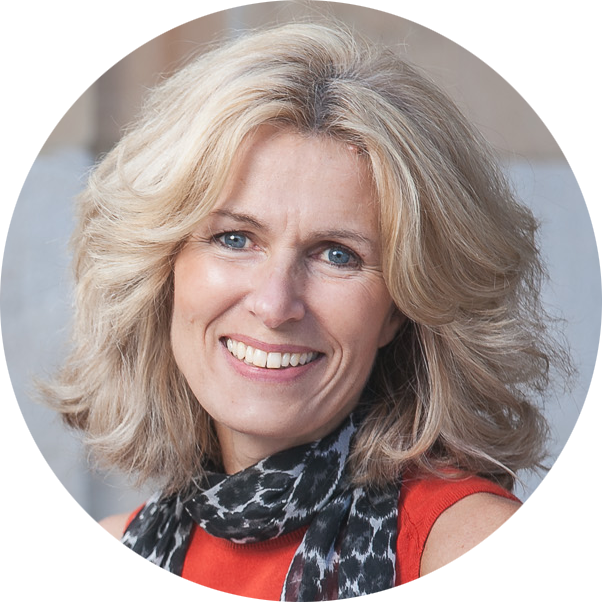
Liz was Formula Botanica’s Content Coordinator between August 2020-2024. Liz worked as a professional blogger, journalist and site developer for many years and was also part of the Formula Botanica student community. Read more about the Formula Botanica Team.

